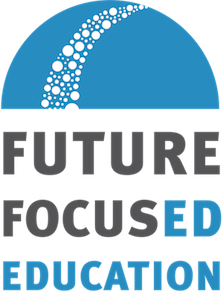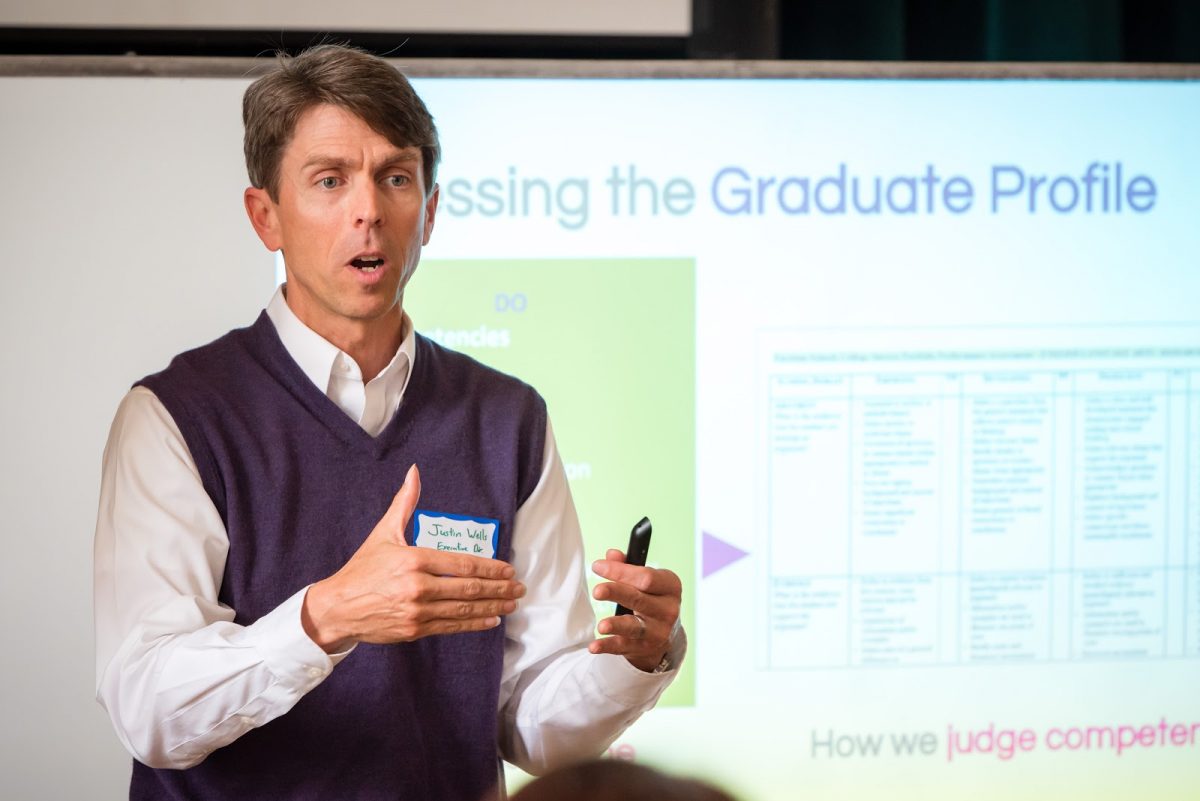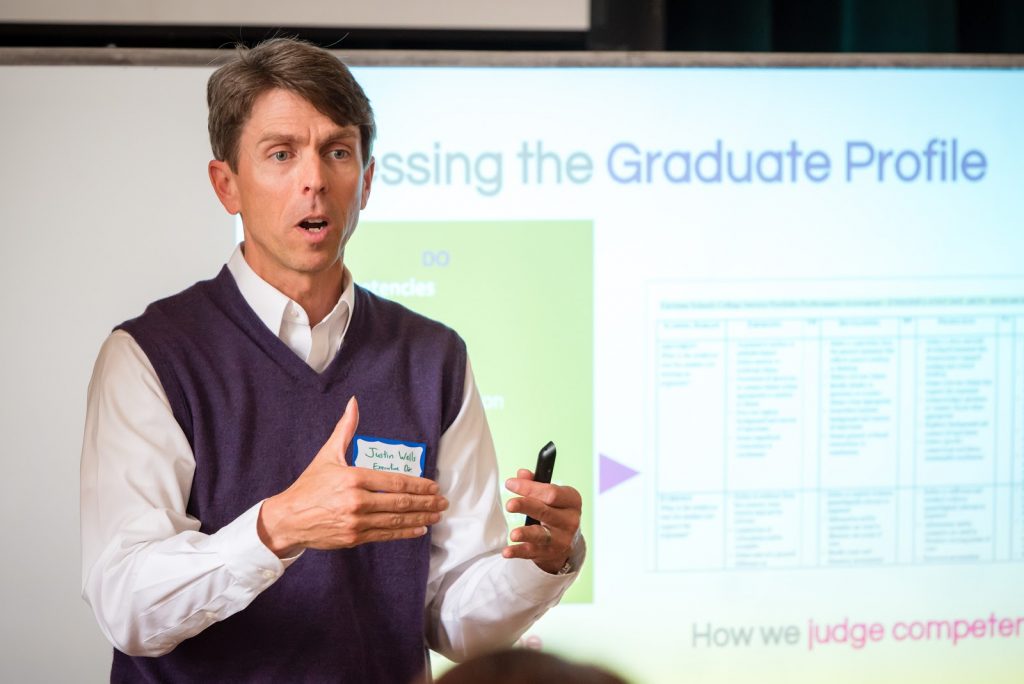From Poster to Practice: How to Fulfill the Promise of Graduate Profiles
By Justin Wells | Executive Director, Envision Learning Partners | July 2, 2020
As a young teacher, I often measured students on things they didn’t have the chance to practice. I whipped out a public speaking rubric when students presented at the front of the room. I graded them on their volume, posture, eye contact. But we hadn’t devoted time to practicing those skills in class. I expected and assessed the skills, but I didn’t create the conditions for students to learn them. I cringe when reflecting on what was essentially a malpractice on my part: projecting expectations onto my students without taking responsibility for helping them meet those expectations.
This is what Tony Monfiletto is getting at in his earlier blog, “Are Graduate Profiles a Fad? Or a Real Fix?” where he critiques the growing phenomenon of the graduate profile, which is essentially a set of desired learning outcomes writ large for a school or district. Tony argues that “graduate profiles would be a lot more meaningful if they were promises to young people rather than projections by adults.”
Potential to Transform the System
He’s absolutely right, and I’ve started citing Tony’s concept of “promises to young people” in my own work with school districts. I lead a small organization, Envision Learning Partners (ELP), that, much like Future Focused Education, is committed to closing opportunity gaps for students who are furthest from opportunity. ELP supports schools to develop learning and assessment systems that infuse high expectations, real-world relevance, and attention to the whole child into students’ school experiences.
In light of that mission, I remain a booster for the graduate profile movement. This country is long overdue for a hard look at what our schools are for. In my career I haven’t seen anything come close to what the graduate profile movement has catalyzed: a wide-spread, soul-searching conversation on the purpose of our schools. I applaud what I see announced on graduate profiles all over the country—really important skills such as inquiry, citizenship, creativity, persistence, problem solving, cultural competence, and so on. I cheer the movement because of its potential to change our society’s conception of education’s purpose and our notion of student success.
Dangers of the Bandwagon
But, like Tony, I also worry for the movement. It’s become a bandwagon. There are hundreds of graduate profiles published in this country, yet I cannot point to a single school district that has fully operationalized its profile, truly transitioned “from poster to practice.” If we don’t see graduate profiles made visible in actual student work and student voice—”show don’t tell,” says this old English teacher—then we’re destined to look back on grad profiles as another edu-trend that came to nothing. In my estimation, every grad profile is promising, but it remains a promise unfulfilled.
Tony argues that we cannot expect to fulfill those promises without thinking beyond the boundaries of the school system. “We need to think more like a mayor than a superintendent,” I heard him say recently. He points to research showing that “less than a quarter of educational outcomes can be attributed to teacher or school performance.” Again, he’s right. It’s a call for us, as educators, to be more humble about our influence and bigger-picture in our thinking.
Schools’ impact on student’s lives may be smaller than we’d like to believe, but it’s still significant. School districts can do much more than they are currently doing to create learning conditions and experiences that accelerate students toward the aspirations expressed in a typical graduate profile.
How to Fulfill the Promise
Here is my advice to school districts developing or implementing a graduate profile:.
1. Co-design with Community
Graduate profiles must be co-designed with the community they serve. That should include students, parents, alumni, and members of the community-at-large. This is a must. If you have a profile that doesn’t include their input, then go back and do it over again.
2. Start with the "Practice Question"
Resist the impulse to start with the assessment question: “How will we measure these skills?” Instead, focus energy on what I call the practice question: “How will our students practice these skills?”
I see it time and again. After developing a grad profile, a district’s first move is to develop a fleet of rubrics so that they can “measure” their profile. This comes before investing in project-based learning, implementing student-led conferences, interrogating the master schedule, improving the quality of research assignments, developing an advisory system, or connecting students to community mentors. It’s a system-wide version of what I did as a young teacher, whipping out my public speaking rubric without teaching public speaking.
Answer the practice question, and the measurement answer comes easily. It’s not so easy the other way around.
3. Consider the Implications
When my organization works with a school district that has or is developing a graduate profile, we challenge the district, at every step, to grapple with the implications of their aspirations. Value student agency? Where will students get to design their own learning journey? Value critical thinking? What’s your plan for training teachers in Socratic seminar? Value problem solving? Where are the maker spaces?
We worked with one district that backed away from listing collaboration on its grad profile, once it acknowledged that it didn’t have the will to implement project-based learning. I was disappointed by the choice but respected the integrity. The district wasn’t going to make a promise it couldn’t keep.
Courage to match our aspirations
Yes, we should have high expectations for our students, but it is unjust to measure things that students haven’t had an opportunity to practice. Practice remains the only way for humans to get better at anything. Future Focused Education gets it right with the sentence starter on its Launchpad graphic: “I have opportunities to . . .” The responsibility to create learning opportunities doesn’t belong to our students; it belongs to the adults in the system.
Tony wisely reminds us that schools’ influence is limited, but there is no reason to believe that its proportion of influence is static. The potential of the graduate profile movement is that it pushes us to serve students differently, engage them more fully, and thereby grow schools’ sphere of influence on educational outcomes. I believe this is possible.
Aspiration comes easier than courage. But let’s bolster our courage before we temper our aspirations. Our students deserve what our graduate profiles promise.
.
Justin Wells is the founding English teacher of Envision Learning’s first school. He has served as the associate research director for performance assessment at the Stanford Center for Assessment, Learning, and Equity, where he designed the prototype performance tasks for the Smarter Balanced Assessment Consortium. Justin is also the co-author of Transforming Schools Using Project-Based Learning, Performance Assessment, and Common Core Standards.





Comments
Great article, Justin. I’ll re-post it to the Scaling Student Success network.